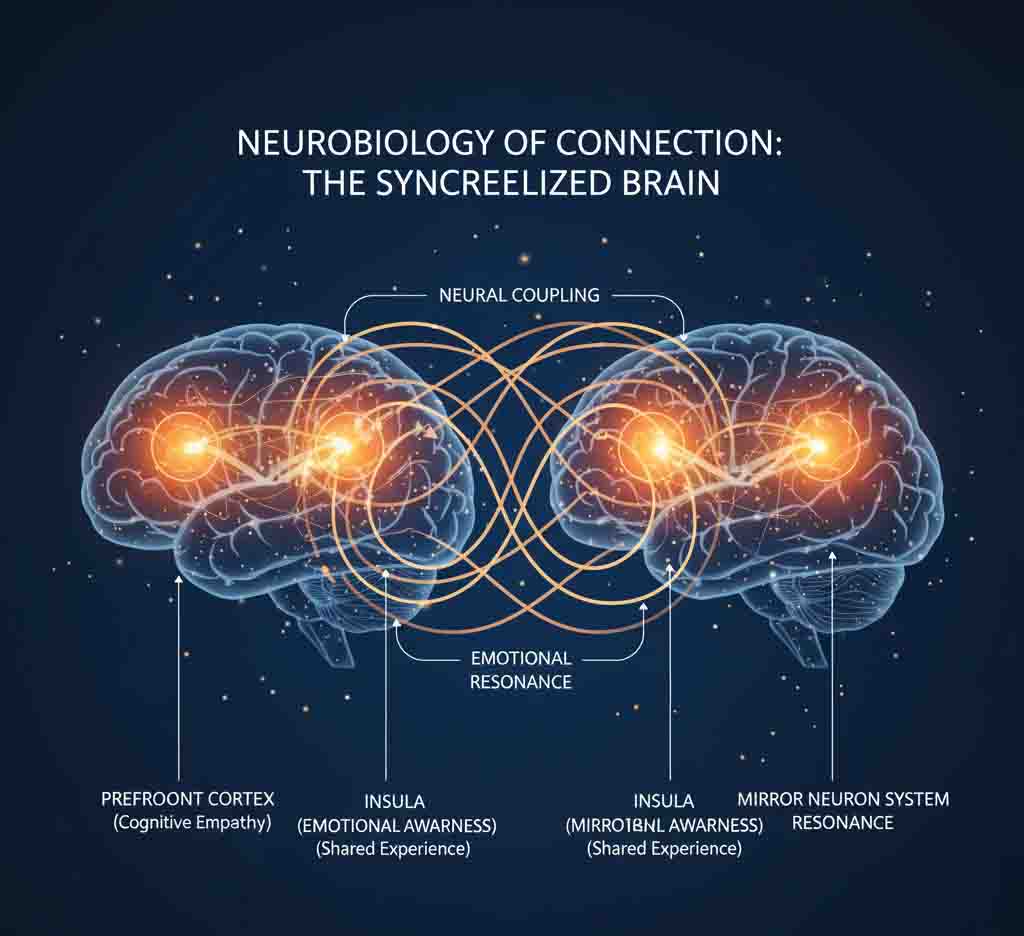Table of Contents
-
The Clinical Definition of Authentic Connection
1. The Clinical Definition of Authentic Connection
From a clinical psychology perspective, authentic connection represents a bidirectional relationship state characterized by mutual emotional presence, accurate empathy, and reciprocal vulnerability. This is not merely social interaction but a complex dance of neural synchronization and emotional co-regulation that forms the foundation of psychological wellbeing.
Research in interpersonal neurobiology demonstrates that authentic connection activates the brain’s social engagement system, stimulating the release of oxytocin and dopamine while reducing cortisol levels. This neurochemical environment creates optimal conditions for trust building and emotional safety. Therapeutically, we measure connection quality through observable indicators including nonverbal synchrony, emotional congruence, and responsive attunement.
Q: As a clinician, how do you distinguish authentic connection from codependency?
A: Authentic connection maintains healthy ego boundaries while celebrating interdependence. Codependency blurs these boundaries, creating enmeshment where individuals lose their sense of self. The key differentiator is whether both parties maintain autonomy while choosing emotional closeness.
2. Neurobiological Foundations of Human Bonding
Human connection operates through sophisticated neural mechanisms. The mirror neuron system allows us to internally simulate others’ experiences, forming the biological basis of empathy. Simultaneously, the ventral vagal complex of our autonomic nervous system regulates our capacity for social engagement, determining whether we feel safe enough to connect meaningfully.
Attachment research reveals that our early caregiver relationships create neural templates that shape connection expectations throughout life. These internal working models influence how we perceive emotional availability and respond to relationship threats. Modern neuroimaging studies show that secure attachment correlates with greater integration between the prefrontal cortex and limbic system, enabling better emotional regulation during interpersonal challenges.
Q: Can adults rewire insecure attachment patterns developed in childhood?
A: Absolutely. Through neuroplasticity and therapeutic practices like mindfulness and mentalization, adults can develop earned secure attachment. This requires consistent experiences of safe emotional engagement that gradually reshape neural pathways toward greater connection security.
3. Psychological Principles of Deep Connection
Neural Synchronization
Genuine connection creates measurable alignment in brain activity between individuals. This neural harmony facilitates mutual understanding and emotional resonance, forming what neuroscientists call “brain-to-brain coupling.”
Emmental Contagion Regulation
We constantly influence each other’s emotional states through implicit processes. Healthy connection involves conscious management of this emotional transmission, ensuring positive affect predominates while compassionately addressing negative states.
Intersubjective Awareness
This advanced capacity involves maintaining awareness of both your own and another’s inner experience simultaneously. It’s the psychological foundation for true mutuality in relationships.
Attachment Security Activation
By consciously creating emotional safety, we can activate the secure attachment system even in individuals with historically insecure patterns. This requires consistent emotional responsiveness and reliable presence.
Q: How can someone develop intersubjective awareness if they struggle with emotional awareness?
A: Begin with mindfulness practices that enhance internal emotional awareness. Gradually add perspective-taking exercises, imagining others’ experiences while maintaining connection to your own. Therapy modalities like Mentalization-Based Treatment specifically target this capacity.
4. Clinical Framework for Building Connection
Phase 1: Assessment and Awareness (Weeks 1-3)
Conduct thorough self-assessment of attachment patterns and communication habits. Practice observational skills by noting subtle nonverbal cues in daily interactions. Develop emotional vocabulary to enhance expression precision.
Phase 2: Skill Acquisition (Weeks 4-8)
Master active listening with emphasis on paraphrasing both content and underlying emotion. Learn validation techniques that acknowledge others’ perspectives without necessarily agreeing. Practice vulnerability gradation, sharing appropriately scaled personal material.
Phase 3: Integration and Application (Weeks 9-16)
Implement new skills across relationship contexts, noting differential effectiveness. Develop personal connection rituals that reinforce secure attachment behaviors. Practice repair strategies for inevitable misattunements.
Phase 4: Deepening and Maintenance (Months 5-8)
Establish relationship check-in protocols that proactively address connection quality. Cultivate shared meaning through collaborative projects and values discussions. Develop resilience strategies for navigating relationship stressors.
Q: What’s the most common mistake people make when trying to improve connection skills?
A: Typically, people focus too much on technique and too little on genuine presence. Connection flourishes not from perfected methods but from authentic engagement. The therapeutic goal is integrating skills so thoroughly they become natural expressions of caring.
5. Therapeutic Approaches to Connection Barriers
Attachment Injury Repair
Using emotionally focused therapy techniques to heal specific relationship wounds that damaged trust. This involves carefully revisiting the injury within a safe therapeutic context and creating new, healing emotional experiences.
Social Anxiety Reduction
Through graduated exposure and cognitive restructuring, individuals learn to tolerate the vulnerability inherent in connection. Mindfulness practices help manage physiological arousal during social engagement.
Alexithymia Intervention
For those struggling to identify and express emotions, we use sensory-based exercises to enhance interoceptive awareness and develop emotional vocabulary through concrete anchoring.
Defensiveness Modulation
Teaching clients to recognize defensive patterns and substitute vulnerability for self-protection. This involves identifying underlying fears driving defensive responses and developing alternative coping strategies.
Q: How long does meaningful change typically take in connection patterns?
A: While initial improvements often appear within weeks, lasting neural and behavioral changes typically require 6-18 months of consistent practice. The brain needs repeated experiences of successful connection to rewire deeply ingrained patterns.
6. Evidence-Based Maintenance of Meaningful Relationships
Clinical research reveals that relationship quality depends less on conflict frequency and more on repair effectiveness. The Gottman Institute’s findings demonstrate that successful relationships maintain at least a 5:1 ratio of positive to negative interactions, with prompt repair following inevitable misattunements.
Neuroscience confirms that regular positive social engagement stimulates neurogenesis in brain regions associated with social cognition and emotional regulation. This means that maintaining healthy relationships literally builds the neural infrastructure for better future connections.
The most resilient relationships incorporate what psychologist John Gottman calls “rituals of connection” – regular, meaningful interactions that maintain emotional intimacy amidst life’s demands. These practices create neural patterns that sustain bonding even during stressful periods.
Q: What single factor most predicts long-term relationship satisfaction?
A: Research consistently identifies emotional responsiveness as the strongest predictor. When partners believe their emotional needs will be met with sensitivity and care, relationships thrive through various challenges. This responsiveness creates what attachment theorists call a “secure base” for individual and relational growth.



